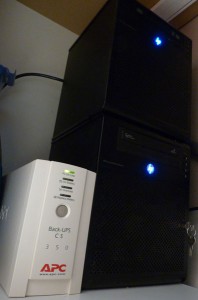While setting up a backup solution for my home network, I had an issue where my Windows Server 2012 R2 backup task would fail, with the following status:
“There is not enough disk space to create the volume shadow copy on the storage location. Make sure that, for all volumes to be backed up, the minimum required disk space for shadow copy creation is available. This applies to both the backup storage destination and the volumes included in the backup.
Minimum Requirement: For volumes less than 500 megabytes, the minimum is 50 megabytes of free space. For volumes more than 500 megabytes, the minimum is 320 megabytes of free space.
Recommended: At least 1 gigabyte of free disk space on each volume if volume size is more than 1 gigabyte.
Detailed error: Insufficient storage available to create either the shadow copy storage file or other shadow copy data.”
This doesn’t really explain the issue, as setting up a schedule with Windows Server Backup in 2012 involves the utility checking available storage before creating the backup task, and a manual check showed there was ample storage on the destination volume, with the source volume having 86% free space.
Delving into the Event Viewer for more detailed error message, I get this:
Continue reading “Windows 2012 Server Backup 0x80780119 Error”
